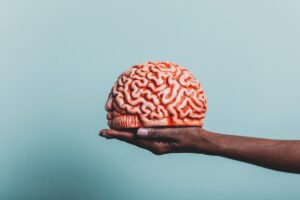The opioid epidemic that the country is facing has affected many aspects of our society.
It impacts us in a variety of ways ranging from the criminal justice system, governmental policy changes and the healthcare system. Families have been touched and lives have been lost during this epidemic. It is wide reaching in ways that you may not even be aware of. Currently as a nation the way we face it is in the form of prevention. The ways in which we enact prevention are to reduce the supply, reduce the demand and reduce the harm. While historically prevention methods against illicit substances such as heroin have been reducing the supply and reducing the demand of the drug, the one method of prevention that has shown great promise in recent years is harm reduction. The aim of harm reduction is to reduce the negative consequences of drug use. The benefits of harm reduction are not only for the addict but for society as well.
Harm reduction methods help to prevent the spread of infectious disease, allow for peer outreach to assist in treatment placement, improve quality of life and increase the lifespan of addicts. While some may have conflicted views on some of the methods as a whole harm reduction has been shown in many cases to stabilize those with substance abuse disorders to the point where they are able enter treatment. The total number of overdose deaths in 2019 was a staggering 70, 980 lives lost. If more addicts were reached by community and peer outreach programs this number could be lessened. Many who have benefited from harm reduction have led productive lives and even have achieved complete abstinence after benefiting from the stabilization some of its methods provide. Some of the methods of harm reduction range from needle exchange programs, medication-assisted treatment, as well as education and outreach programs for those in active addiction.
The epidemic we have now takes lives every single day. Not to mention the cost it brings on our criminal justice system and health care system. As law enforcement at the local and federal level take aim at the suppliers the demand is still high for certain illicit substances. This all comes from the need for relief. It is an innate human need to seek relief from pain be it physical pain or emotional. When people find a form of relief in drugs, they continue to turn towards the substance that provided that relief. Thus, the demand for something to bring this feeling of freedom from pain, anxiety, stress, depression and isolation will always be in our society. It is paramount for alternative treatments to reduce the overall societal cost as well as reach out to addicts for treatment. Many addicts today benefit from harm reduction in conjunction with treatment. While it is not for some it allows for addicts to safely begin a process where they return to society as functioning members. Those addicts who have been on the streets shooting drugs intravenously and have no idea what they really have been putting in their bodies benefit greatly from programs such as needle exchanges and medication-assisted treatment (MAT).
Needle exchange programs can immediately reduce the overall cost of the opioid crisis in the nation. An addict who gets cellulitis, staph, MRSA, Hep C, HIV and various other infections from IV drug use or from just living on the streets, will need to be treated by medical professionals at hospitals and emergency rooms. Many of these addicts either do not have insurance or only have Medicaid. The cost of this medical care then falls to the taxpayers for the health needs of many of those suffering from substance use disorders when all is said and done. Intravenous drug users are far more likely to contract diseases from the lifestyle that usually accompanies active addiction. It is estimated that 50% – 90% of all needle using addicts carry Hepatitis C. On top of that 17% of all HIV/AIDS cases in the United States resulted from IV drug use. This is not even to mention the risk of infection from staph or MRSA that is prevalent with many opioid users.
When we take that into account along with the fact that for opiate addicts the cost of their drug of choice is usually funded half the time through illegal we are looking at something larger than just the acceptable methods of treatment. This crisis is wide sweeping due to not only the human toll it takes but the financial one it takes on the entire country as well. This is also why introducing MAT is crucial to the harm reduction process. To allow for Suboxone, methadone, Vivitrol and Sublocade treatments for heroin addicts it reduces healthcare costs while simultaneously reducing the cost for the prosecution and incarceration of addicts. When addicts are not sharing needles or are stable on a replacement program this will greatly lessen the financial cost as well as save lives.
Once an addict is on MAT it can allow for them to get off the streets and find a job. Down the road they may even decide to get off the MAT program they on while under the supervision of a physician. Peer and community outreach will help with stabilization, help with placement of beds for treatment, teach education on drugs and STDs, as well as provide Narcan (overdose reversing medication) training to help save lives. The big thing an addict needs to deal with on the road to recovery is changing their thought pattens and perceptions. As for many addicts their way of thinking brought them to substance abuse and by simply putting down the drug and not changing their behaviors will inevitably bring them down the same path. For others, their neural pathways have been altered by prolonged drug use. In either case they need to alter their thought patterns in some form or another. This could be a 12-step fellowship, meditation, thought exercises, and even therapy.
So long as we have an issue with heroin and the various drugs that flood the nations, cities and towns we need to have harm reduction and treatment readily available for addicts. As I have said this would alleviate a large amount of the cost associated with the Opioid Crisis that could be redistributed in areas that the funds would be better served in such as healthcare, treatment facilities as well as mental health facilities.





